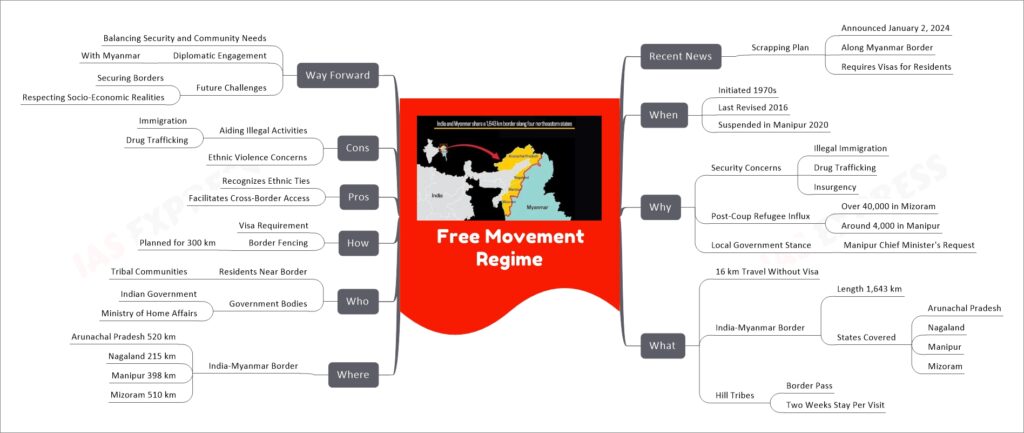Free Movement Regime

The Free Movement Regime (FMR) between India and Myanmar, initiated in the 1970s, allows residents within 16 km of the border to travel up to 16 km into the other country without a visa. This regime, covering the 1,643 km border across Arunachal Pradesh, Nagaland, Manipur, and Mizoram, was designed to recognize the close ethnic and familial ties between communities on either side. However, due to security concerns like illegal immigration, drug trafficking, and insurgency, the Indian government announced plans to scrap the FMR in January 2024. The scrapping of FMR is expected to impact the daily lives and cultural connections of the border residents and poses challenges in balancing security needs with the socio-economic realities of these communities.

